Sarajevo is one of those cities that, in my mind, will always be associated with war, in this case the Bosnian war from 1992 to 1995. Yet, in Sarajevo the traces of war are limited to bullet holes in buildings, and perhaps a few buildings that have been destroyed and not rebuilt. The most obvious signs of war are the multiple museums that in one way or another remember the war, show the horrifying details, and charge for that. There is the Gallery 11/07/95, which details the genocide of Srebenica, the Siege of Sarajevo Museum, showing artefacts that relate to the siege, that lasted the entire war, and the History Museum of Bosnia and Hercegovina, which also has an exhibition on the siege. Then there is the Ratni Muzej – War Museum 1992 Sarajevo, about life and survival during the siege of Sarajevo 1992 – 1995, made and run by a family which survived the war. The Museum Of Crimes Against Humanity And Genocide 1992-1995, subject matter obvious, and the Sarajevo Tunnel Museum, showing the Tunnel of Hope that the Bosnian army built in 1993 to connect the city of Sarajevo with the only free territory in the surrounding area. The War Childhood Museum shows artefacts and memories from people who were a child during the siege. And I am sure there are more, all charging a – for Bosnia – hefty entrance fee; after all, it is only the tourists who visit those, not the local people. Somehow, this feel wrong, it feels like the horror of the war is now being exploited commercially. Museums like this should be there to remember, to never forget, not to make money. I know enough examples, Berlin being one of them, where this type of museums are free. And where there is some coordination between them, to avoid duplication.
The Museums
We do visit some of the museums, of course. We are confronted with the war horrors, with the blatant genocide of 8372 men and boys in Srebrenica, through an extremely moving video and associated photos, where not only the cold murder is detailed, but also how mass graves were dug up again and remains buried somewhere else, sometimes three times, to cover the traces, by people who obviously knew perfectly well that what they did, had done, would be judged at a later time. We get close up with details of the siege of Sarajevo, where shells were being lobbed indiscriminately into the city centre, and where snipers were shooting at random people who needed to cross from one area of the city to another – just think about this a little longer, people with precision guns were shooting at anybody who tries to cross the street, like people going to work, children going to school, women doing the necessary shopping; no military targets, just innocent civilians; how sick do you need to be to do something like this? And we visit the War Childhood Museum, which details the experiences of children who survived the war, and who have made items available to the museum together with their personal stories. At the same time deeply moving, and blatantly commercial – I think.
The City
Yet, as I said earlier, except from the traces of bullets on the walls of many buildings, Sarajevo has picked up again, and is now a thriving city. The old centre especially is lively, with residents, as well as the many tourists who visit the place, enjoying their time outside. Inevitably, very touristic, with all the souvenir shops, fast food restaurants and coffee bars with authentic Bosnian coffee and baklava. The Bosnian coffee is not different from the Serbian coffee we had earlier, or from Turkish coffee, Lebanese coffee, Syrian coffee or Arab coffee in other parts of the world. Come to think of it, more than any place we have been this trip, old Sarajevo reminds us of Turkey. The many mosques, some of them exquisite, the bazaar with its carpet shops, the narrow cobbled streets with the silver and gold shops, all very recognisable. No doubt because of the conquest by the Ottoman Empire that incorporated the country in the 15th C, and brought Islam to Bosnia and Hercegovina, not only from the ruling class that was sent down from Constantinople, but also through conversions of the local population.
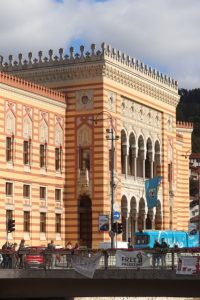
the city hall of Sarajevo, built at the end of the 19th C, and the last place visited by Archduke Franz Ferdinand of Austria and his wife in 1914, before they were shot
However, moving downstream the Miljacka River that flows through town, the newer parts of the city appear, in the form of the neo-classical Austro-Hungarian architecture. The Austro-Hungarians annexed the country in the late 19th C, and held on to it until the First World War – which, of course, was triggered in Sarajevo, as well. Many of these houses are lining the river; interestingly, some have in the meantime be replaced, by modern buildings, making the architectural makeup of this part of the city a hotchpotch of different styles.
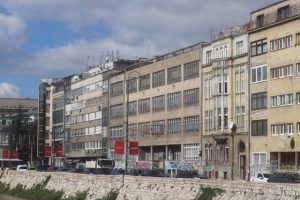
or with the standard concrete fare of the post-war Socialist era, interspersed with the occasional old building
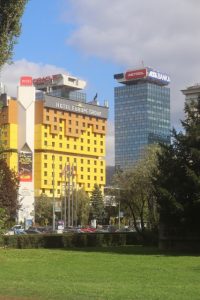
UNITIC twin towers in the back, and the Holiday Hotel in the front, all badly damaged during the war but now fully restored
The Brutalism
Even further downstream, we stumble upon some gems of our newly-discovered interest, Brutalism and Social modernism. Some of those icons, like the Holiday Hotel, built for the 1984 Winter Olympics, and the next-door UNITIC twin towers, were badly damaged in the war, and have been restored, but with a new look. Others, like the RTV DOM building and the History Museum, are a blatantly unreconstructed Brutalist fest of concrete. And the Alipasino Polje neighbourhood from the 1970s, well, that competes once again with the Blokus 62 and others in Belgrade. Less sophisticatedly built, perhaps, but similarly an attempt to create a whole community, with schools, playgrounds and other facilities. And here especially standing out by it sheer size, it looks like there are endless numbers of sky-high residential towers here – I read somewhere that Alipasino Polje has an estimated almost 30,000 people living here.

The ICAR Canned Beef Monument, a memorial to the food aid delivered during the Siege of Sarajevo, but also a swipe at the type of aid: barely-edible canned food, instead of weapons
That Brutalism is not only limited to the 1970s-80s is proved by the Saint Luke Evangelical church, in this same neighbourhood, which was started in 1998 and, apparently, still not finished due to lack of funds. It is another concrete monster, designed, incidentally, by the same architect as did the Holiday Hotel and the UNITEC Towers in the 1980s.
But the best I keep for the end. We had unwittingly booked our apartment in perhaps the best building of Sarajevo, the absolutely Brutalist Papagajka building, from 1982. Papagajka means parrot, and the colours are those to match. The apartments are tiny, as in a true pallati, and the structure is unbeatable in its originality. And the best thing, although this may have been a later addition, is that it has a lift.
Oh, and the absolutely very best we keep for the very last, the Igman Hotel outside the city.
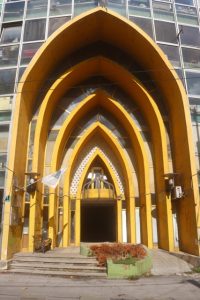
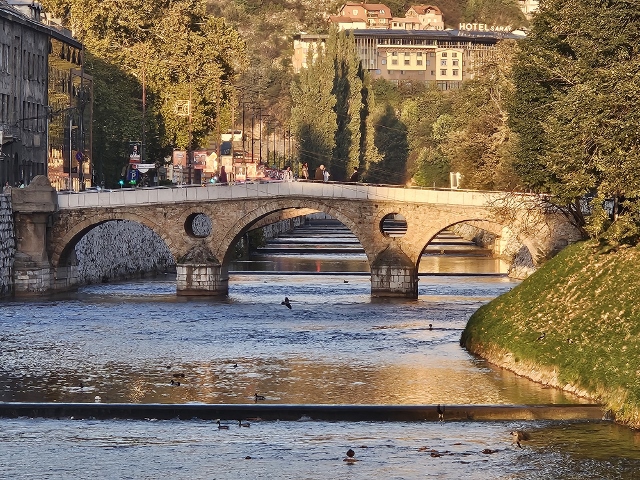
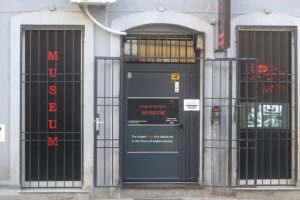

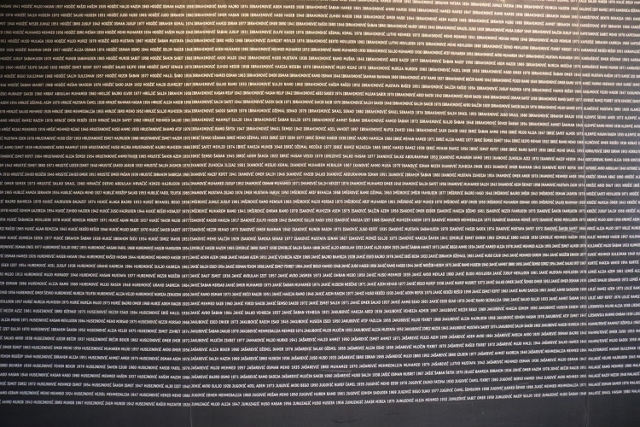
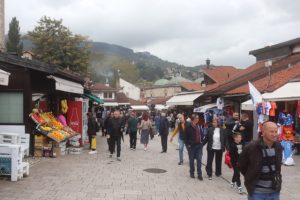
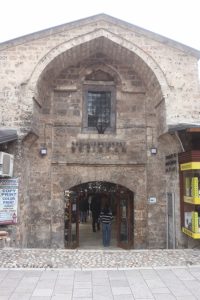
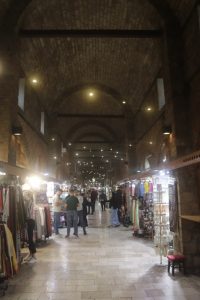
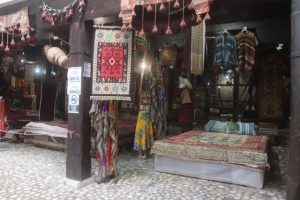

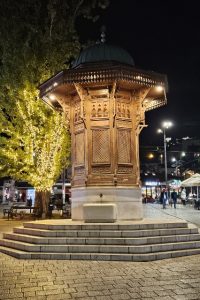
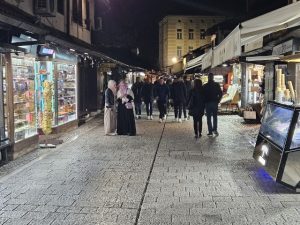
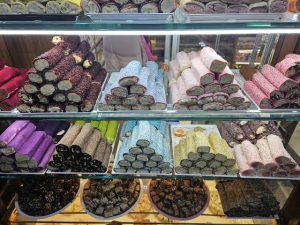
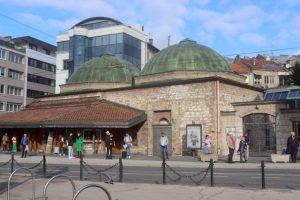
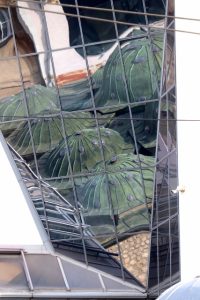
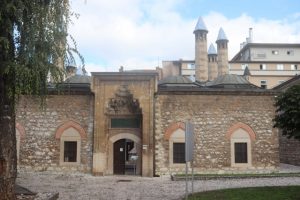

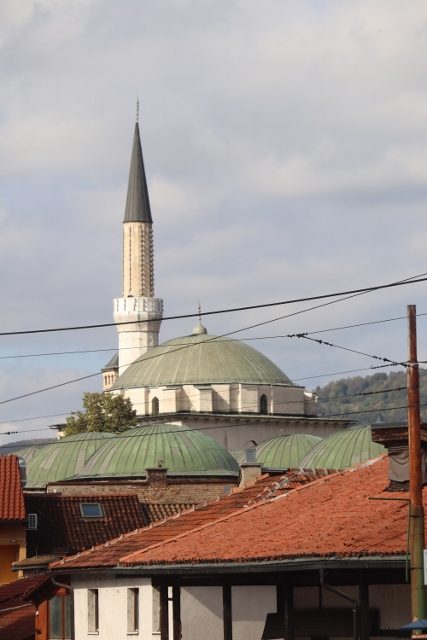
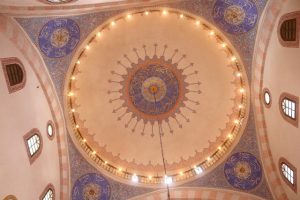
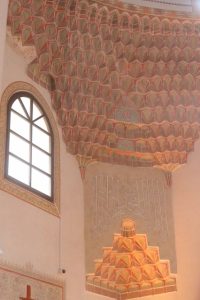
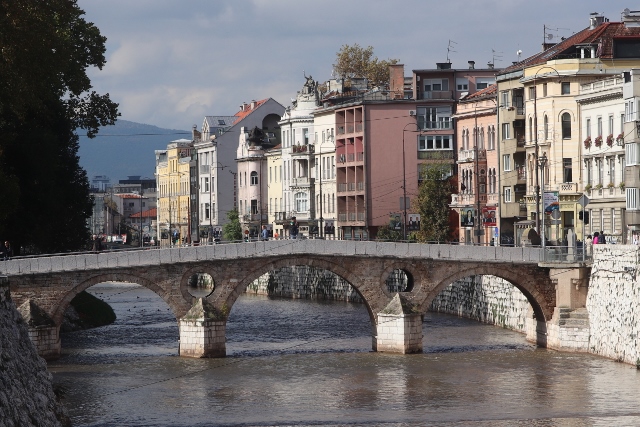
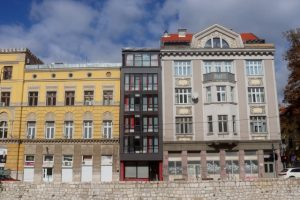
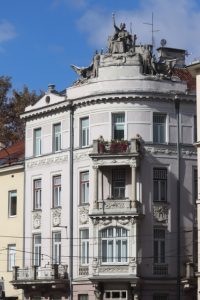
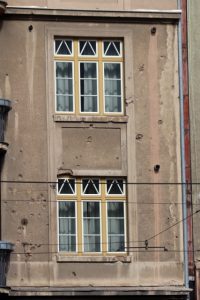
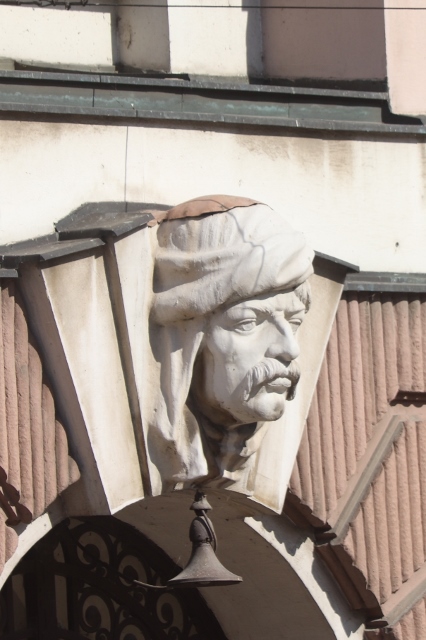
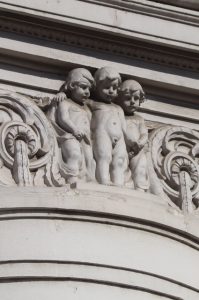
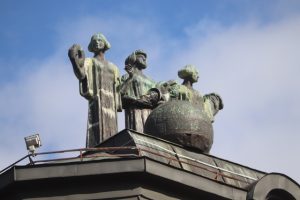
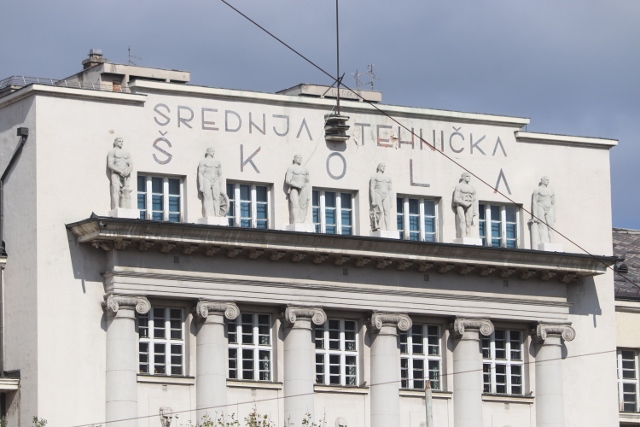
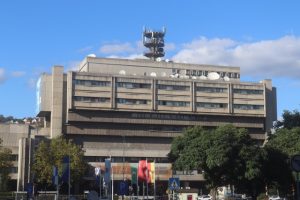
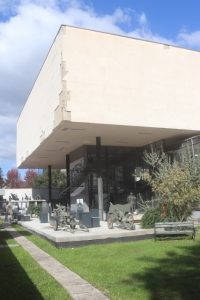
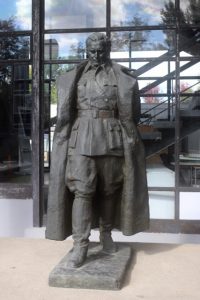
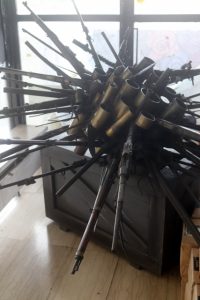
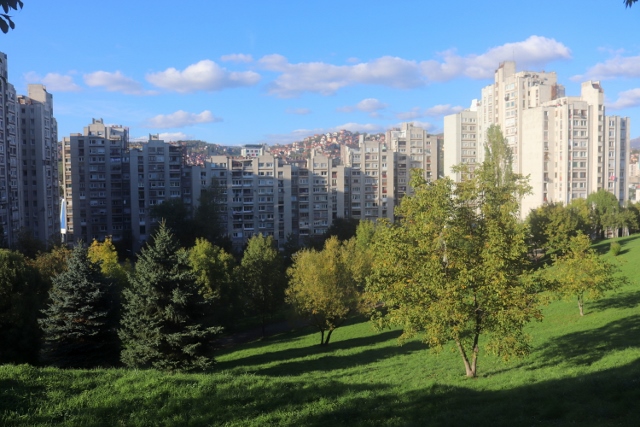
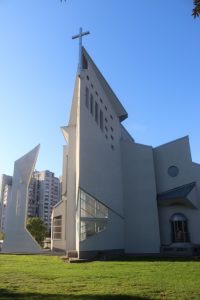
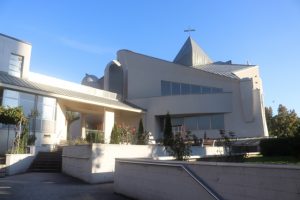
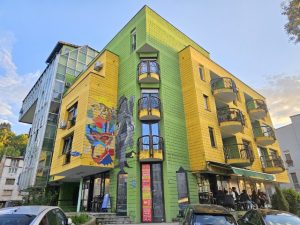
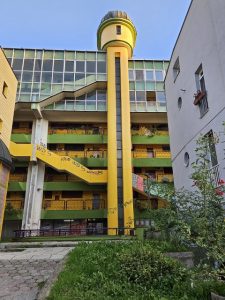
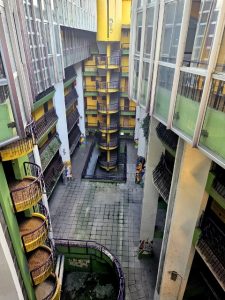

 RSS – Posts
RSS – Posts







